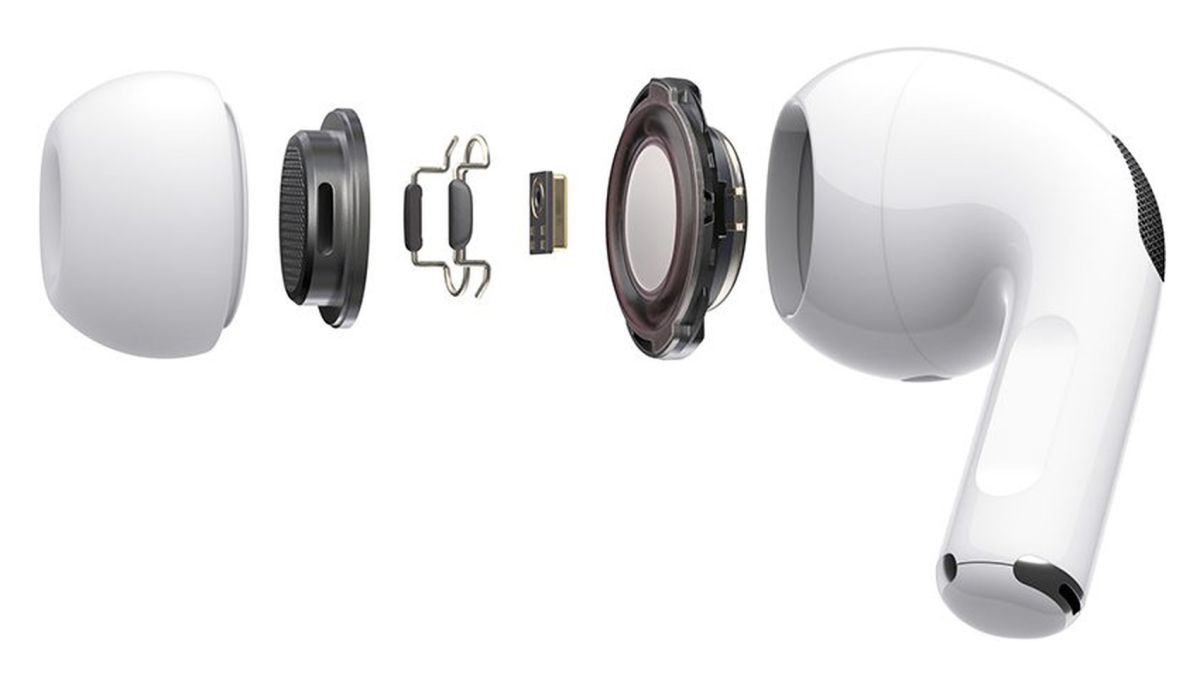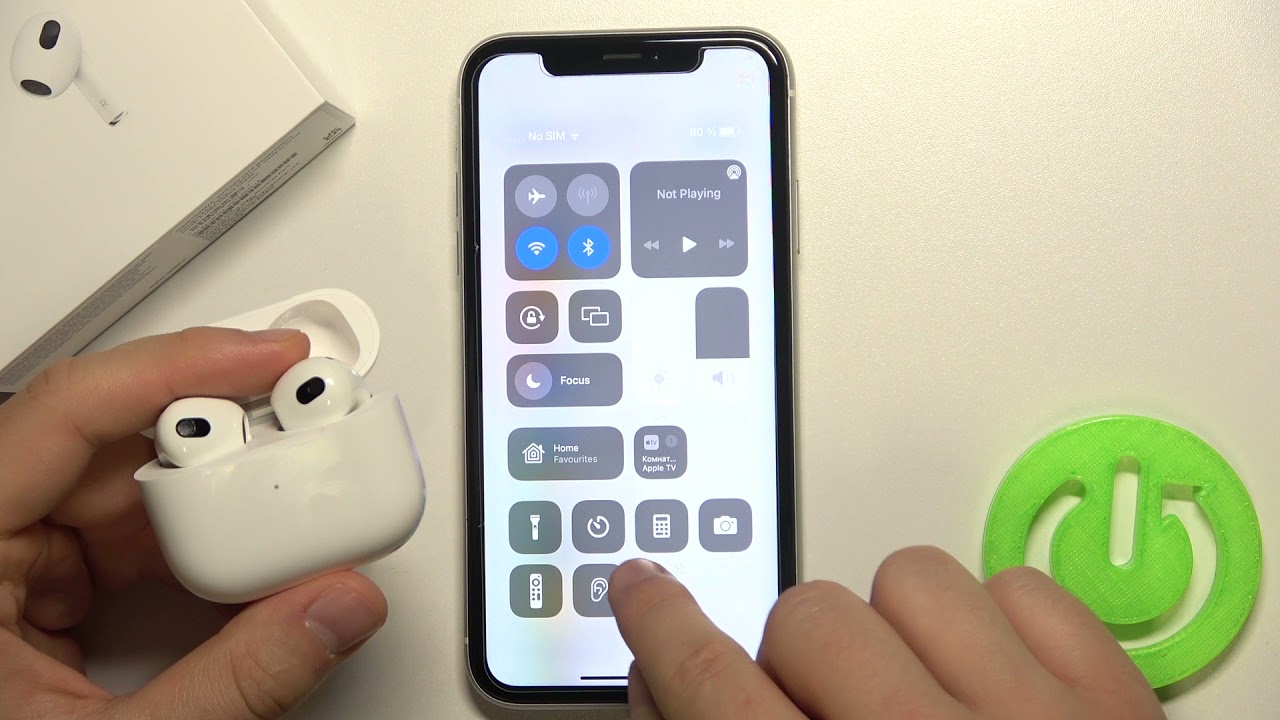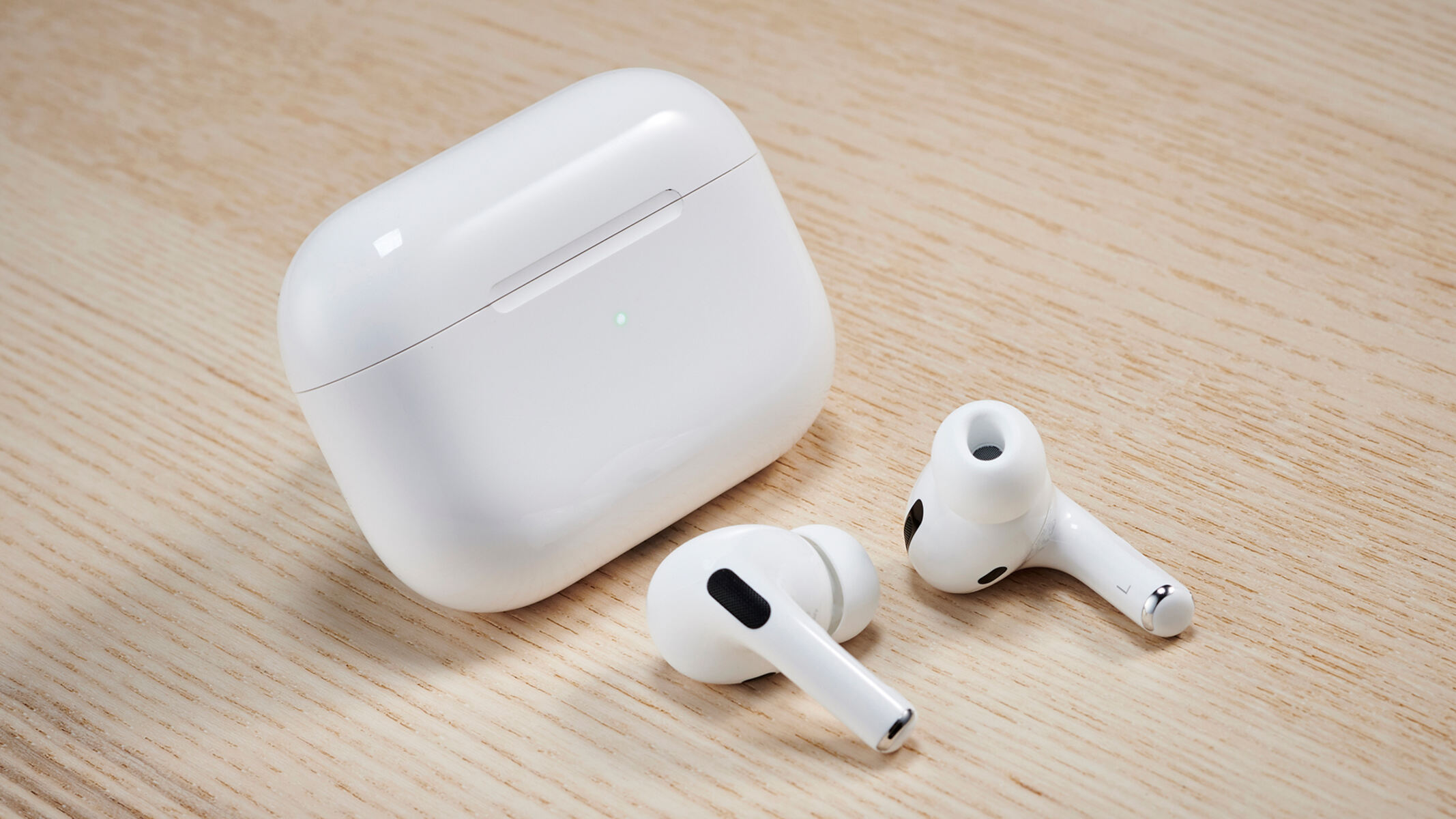Introduction
Have you ever experienced the frustration of trying to listen to music or have a conversation in a noisy environment? The constant background noise can be distracting and make it difficult to focus or enjoy your audio content. This is where noise-cancelling technology comes to the rescue, and Apple’s Airpods have taken this technology to new heights. In this article, we will explore how noise cancellation works in Airpods and why it has become such a sought-after feature for audio enthusiasts.
Airpods, with their sleek design and seamless integration with Apple devices, have quickly gained popularity among tech-savvy individuals. One of their key selling points is their ability to reduce outside noise and provide an immersive audio experience.
Before we dive into the details of how Airpods achieve this, it’s important to understand what noise cancellation is. In simple terms, noise cancellation is a technology that actively reduces unwanted sounds using special hardware and software mechanisms. It creates an environment where you can focus on the audio you want to hear, whether it’s music, podcasts, or phone calls, while minimizing the impact of background noise.
Airpods utilize active noise cancellation, a sophisticated technology that goes beyond passive noise isolation, which simply blocks external sound by physically sealing your ear canal. Active noise cancellation takes it a step further by actively analyzing and countering incoming sound waves, delivering a more seamless and immersive audio experience. Let’s take a closer look at how Airpods achieve this impressive feat.
How Do Airpods Achieve Noise Cancellation?
Airpods utilize a combination of advanced hardware and sophisticated algorithms to achieve noise cancellation. The technology is designed to counteract external noises, allowing you to enjoy your audio content without distractions. Here’s how it works:
- Active Noise Cancellation: Airpods feature built-in microphones that detect external sounds. These microphones capture the ambient noise around you, such as the sound of traffic or people talking. The Airpods then generate an equal but opposite sound wave, known as an anti-noise wave, to cancel out the unwanted noise. This effectively neutralizes the external sounds and creates a quieter listening environment.
- Microphones and Feedback: Airpods use multiple microphones to achieve precise noise cancellation. One microphone faces outward to detect external sounds, while another microphone faces inward to monitor the sound within your ear. The internal microphone picks up any sound leakage caused by the fit of the Airpods. By continuously monitoring and analyzing the incoming and outgoing sounds, the Airpods can adjust the noise cancellation settings in real-time to optimize the listening experience.
- Noise Cancellation Algorithms: The data collected by the microphones is processed by the Airpods’ noise cancellation algorithms. These advanced algorithms use signal processing techniques to analyze the audio input and generate the appropriate anti-noise wave. By analyzing the characteristics of the ambient noise, such as frequency and amplitude, the algorithms can generate the counteracting sound waves that effectively cancel out the unwanted noise.
- Transparency Mode: In addition to noise cancellation, Airpods also offer a feature called Transparency Mode. This mode allows you to hear and engage with your surroundings without having to take off the Airpods. By activating Transparency Mode, the microphones pick up the external sounds and amplify them, creating a more natural listening experience. This is particularly useful when you need to be aware of your surroundings, such as when crossing the street or having a conversation.
By combining these innovative technologies, Airpods can deliver an impressive level of noise cancellation, allowing you to enjoy your audio content in peace and clarity. However, it’s important to understand that noise cancellation is not a perfect solution and has its limitations.
Active Noise Cancellation
Active noise cancellation (ANC) is a key feature of Airpods that sets them apart from traditional earphones. ANC goes beyond passive noise isolation and actively eliminates external sounds to create a more immersive audio experience. Let’s explore how active noise cancellation works in Airpods:
The first step in active noise cancellation is capturing the ambient noise around you. Airpods are equipped with built-in microphones that detect the external sounds in your environment. These microphones pick up a wide range of noises, such as the hum of an air conditioner, the rumble of a train, or the chatter of people in a bustling café.
Once the microphones capture the external sounds, the Airpods’ advanced technology kicks in to counteract them. The incoming noise is analyzed, and the Airpods generate an equal but opposite sound wave, known as an anti-noise wave. This anti-noise wave is then emitted by the Airpods, effectively canceling out the unwanted external sounds.
Active noise cancellation works on the principle of destructive interference. Destructive interference occurs when two sound waves with the same amplitude and frequency but opposite phase collide with each other. The waves cancel each other out, resulting in a quieter environment for the listener.
It’s worth noting that active noise cancellation is most effective for continuous, low-frequency sounds, such as the drone of an airplane engine or the hum of a refrigerator. These types of sounds are easier to counteract because they follow predictable patterns. However, active noise cancellation may not be as effective for sudden or unpredictable loud noises, such as a sudden horn honk or a loud bang.
To ensure optimal noise cancellation, Airpods use multiple microphones strategically placed in different locations. One microphone faces outward to capture the external sounds, while another microphone faces inward to monitor the sound within your ear. By continuously analyzing both the incoming and outgoing sounds, the Airpods can make real-time adjustments to the noise cancellation settings, providing an immersive audio experience.
Overall, active noise cancellation in Airpods is a powerful technology that allows you to enjoy your audio content without the interference of external noises. Whether you’re traveling, working in a noisy environment, or just want to immerse yourself in your favorite music, active noise cancellation in Airpods provides an enhanced listening experience.
Microphones and Feedback
The effectiveness of active noise cancellation in Airpods heavily relies on the use of microphones and feedback mechanisms. These components play a crucial role in capturing and analyzing the external sounds, as well as providing real-time adjustments for optimal noise cancellation.
Airpods are equipped with multiple microphones strategically placed to capture a range of sounds. One microphone faces outward to detect the ambient noise in your environment, while another microphone faces inward to monitor the sound within your ear. This dual-microphone setup allows the Airpods to gather comprehensive data on both the external sounds and the sound leakage within the ear canal.
The external microphone captures the surrounding noise, such as the hum of traffic or the chatter of people around you. It provides crucial input for the noise cancellation algorithms to generate the appropriate counteracting anti-noise waves. By analyzing the frequency, amplitude, and other characteristics of the incoming sound, the Airpods can determine the best response to cancel out the detected noise.
On the other hand, the internal microphone monitors the sound within your ear canal. It checks for any sound leakage caused by the fit of the Airpods. Even with a snug fit, there can be some degree of sound leakage, which can affect the overall effectiveness of noise cancellation. The internal microphone detects this leakage and feeds the information back to the noise cancellation algorithms for adjustments. By constantly analyzing and fine-tuning the noise cancellation settings based on the sound leakage feedback, the Airpods can provide a more customized and accurate noise cancellation experience.
Furthermore, the feedback from the microphones enables the Airpods to provide real-time adjustments to the noise cancellation settings. As you move through different environments or encounter varying levels of noise, the Airpods can adapt and optimize the noise cancellation to suit your surroundings. This dynamic adjustment ensures that you consistently get the best possible noise cancellation performance, regardless of the noise conditions.
It’s important to note that while microphones and feedback mechanisms play a significant role in enhancing noise cancellation, the overall effectiveness of the active noise cancellation technology also depends on other factors. These factors include the quality of the noise cancellation algorithms, the hardware components, and the fit of the Airpods in your ears.
By harnessing the power of microphones and feedback mechanisms, Airpods can deliver exceptional noise cancellation performance, minimizing external disturbances and providing a more immersive audio experience.
Noise Cancellation Algorithms
The efficacy of noise cancellation in Airpods greatly relies on the complex algorithms that process the captured sound data and generate the counteracting anti-noise waves. These algorithms analyze and interpret the characteristics of the incoming sound to produce an optimal noise cancellation experience. Let’s delve into the details of how the noise cancellation algorithms work in Airpods:
When the microphones capture external sounds, the data is sent to the Airpods’ noise cancellation algorithms for processing. These algorithms employ advanced signal processing techniques to analyze the audio input. The algorithms examine various aspects of the incoming sound, including its frequency, amplitude, and phase.
By understanding the properties of the external noise, the algorithms generate a corresponding anti-noise wave with the same frequency and amplitude but with an opposite phase. This anti-noise wave is then combined with the incoming sound, effectively canceling out the unwanted noise. The result is a quieter audio environment for the listener.
The noise cancellation algorithms continuously adapt to changing noise conditions in real-time. As the surrounding noise fluctuates or the listener moves through different environments, the algorithms adjust the noise cancellation settings accordingly. This dynamic adjustment ensures that the noise cancellation remains optimized for the best audio experience.
Airpods employ sophisticated algorithms that can handle a wide range of noise frequencies and amplitudes. These algorithms are designed to prioritize noise cancellation for lower frequencies, as they are more prevalent in everyday environments. By effectively attenuating low-frequency sounds such as traffic rumbles or airplane engine noise, Airpods provide a more immersive listening experience.
While the noise cancellation algorithms in Airpods work diligently to reduce external noise, they also aim to preserve the audio quality of the desired content. The algorithms are designed to preserve the integrity of the audio you want to hear while canceling out the unwanted sounds. This ensures that the music, podcasts, or phone calls you’re enjoying remain clear and enjoyable.
It’s worth noting that noise cancellation algorithms can vary between different headphone models and brands. Each manufacturer may employ their proprietary algorithms, fine-tuned to their specific hardware components and desired audio experience. This is why the noise cancellation performance can differ from one device to another.
Overall, the noise cancellation algorithms in Airpods are a crucial component in providing a superior listening experience. By leveraging advanced signal processing techniques, these algorithms enable Airpods to reduce unwanted external noise and create a more enjoyable audio environment.
Transparency Mode
In addition to active noise cancellation, Airpods offer a unique feature called Transparency Mode. This mode allows you to stay connected to your surroundings without compromising on audio quality. Let’s explore how Transparency Mode works and how it enhances your listening experience.
When you activate Transparency Mode, the microphones in the Airpods start working in a different way. Instead of actively canceling out external sounds, the microphones capture and amplify the surrounding sounds. This includes the sounds of people talking, traffic noise, or even nature sounds.
The amplified external sounds are mixed with the audio playback, creating a more natural listening experience. This allows you to have conversations, stay aware of your surroundings, or simply enjoy the ambience while still keeping your Airpods on.
Transparency Mode is particularly useful in situations where you need to be aware of your environment. For example, when walking on busy streets, you can safely hear oncoming traffic or conversations around you without compromising your audio experience. It also comes in handy during social gatherings, allowing you to have conversations and enjoy music simultaneously.
The effectiveness of Transparency Mode is further enhanced by the microphones’ ability to filter out wind noise. When you’re outside and using Transparency Mode, the Airpods intelligently reduce the impact of strong winds, ensuring that you can hear clearly without any distractions.
Enabling or disabling Transparency Mode is effortless. You can easily switch between Noise Cancellation and Transparency Mode through your device’s control settings or by using the control buttons on your Airpods. This flexibility allows you to adapt the audio experience to suit your specific needs and preferences.
It’s important to remember that while Transparency Mode enhances your awareness of the environment, it does allow some external noise to enter, unlike in Active Noise Cancellation mode where most external sounds are blocked. This means that in extremely loud or chaotic environments, you may prefer to switch to Noise Cancellation mode for a more focused audio experience.
Transparency Mode is a fantastic addition to Airpods, providing a seamless transition between being fully immersed in your audio and being connected to the world around you. Whether you need to stay attentive to your surroundings or simply want to chat with friends while enjoying your music, Transparency Mode adds a new level of versatility to your Airpods experience.
How Effective is the Noise Cancellation on Airpods?
The noise cancellation feature on Airpods has been widely praised for its effectiveness in reducing external sounds and providing a more immersive audio experience. However, the effectiveness of noise cancellation can vary depending on several factors.
Airpods utilize active noise cancellation technology, which is highly effective at reducing continuous, low-frequency background noise. This includes sounds like airplane engine hum, traffic noise, or the drone of a nearby air conditioner. In these situations, Airpods can significantly diminish the impact of external noise, allowing you to enjoy your audio content with greater clarity.
While active noise cancellation is highly effective for low-frequency sounds, its effectiveness for sudden or unpredictable noises, such as loud voices or sharp sounds, may be more limited. This is because active noise cancellation works best when it can anticipate and counteract predictable patterns of noise. Sudden or irregular sounds can be more challenging to actively cancel out.
The quality of noise cancellation can also be influenced by the fit and seal of the Airpods in your ears. For optimal noise cancellation performance, it’s important to ensure a proper fit. A secure and snug fit helps to block out external noise, allowing the active noise cancellation technology to work more efficiently.
Furthermore, the overall noise cancellation experience may vary depending on the specific environment in which you are using the Airpods. In a quieter environment, noise cancellation may not be as noticeable since there is already a minimal amount of external noise. However, in noisy environments, the difference can be significant, as the noise cancellation technology actively reduces the impact of the surrounding sounds.
It’s also important to note that the level of noise cancellation can be adjusted to suit your preferences. Airpods offer different levels of noise cancellation within the control settings, allowing you to customize the intensity of the noise cancellation effect. This allows you to strike a balance between blocking out external noise and remaining aware of your surroundings.
Overall, the noise cancellation feature on Airpods is highly effective in reducing external sounds and creating a more immersive audio experience. It excels at attenuating continuous, low-frequency background noise, providing a quieter audio environment. However, its effectiveness may vary depending on factors such as the fit of the Airpods, the specific noise environment, and the nature of the external sounds encountered.
Limitations and Considerations
While noise cancellation technology in Airpods offers many benefits, it’s important to be aware of its limitations and consider certain factors when using this feature. Here are some limitations and considerations to keep in mind:
- Effectiveness in Certain Environments: While active noise cancellation is effective in reducing continuous, low-frequency background noise, its performance may vary in different environments. In extremely noisy places, such as a construction site or crowded subway, the noise cancellation may not completely block out all the surrounding sounds.
- Noise Leakage: Achieving the highest level of noise cancellation also depends on a proper fit and seal of the Airpods in your ears. If the seal is not tight, there might be some sound leakage, which can reduce the overall effectiveness of noise cancellation.
- Not Ideal for Sudden Loud Noises: Active noise cancellation technology is better suited for attenuating continuous, predictable sounds rather than sudden loud noises. While it can still provide some level of reduction, it may not entirely eliminate the impact of sudden and unpredictable loud sounds.
- Awareness of Surroundings: Noise cancellation can create an immersive audio experience, but it also limits your ability to hear external sounds. This may be desirable in some situations, such as during a flight or while working in a noisy environment. However, it’s important to remain aware of your surroundings, especially when crossing streets or in situations where situational awareness is crucial.
- Battery Consumption: Activating noise cancellation on Airpods requires additional power consumption. While Airpods have good battery life, it’s essential to monitor and manage the usage to ensure a seamless audio experience throughout the day.
- Compatibility and Updates: Noise cancellation features on Airpods may require specific software updates or compatibility with certain devices. It’s important to ensure your Airpods are up to date and check compatibility requirements for optimal noise cancellation performance.
Considering these limitations and factors will help you make the most of the noise cancellation feature on your Airpods. By understanding their capabilities and being mindful of the environment you’re in, you can enjoy a more immersive audio experience while staying safe and aware of your surroundings.
Conclusion
Noise cancellation technology in Airpods has revolutionized the way we enjoy audio content in noisy environments. By actively countering external sounds, Airpods provide a more immersive and enjoyable audio experience. The combination of active noise cancellation, microphones, and advanced algorithms allows Airpods to create a quieter listening environment and deliver high-quality audio.
The active noise cancellation feature on Airpods effectively reduces continuous, low-frequency background noise, providing a more focused audio experience. The microphones strategically placed in the Airpods capture and analyze the surrounding sounds, while the noise cancellation algorithms generate anti-noise waves to neutralize unwanted noise. This technology allows you to immerse yourself in your favorite music, podcasts, or phone calls, free from the distractions of the outside world.
Airpods’ Transparency Mode offers the flexibility to stay connected to your surroundings while still enjoying an enhanced audio experience. This mode amplifies external sounds, allowing you to have conversations and remain aware of your environment without removing the Airpods.
Although active noise cancellation in Airpods has many merits, it’s important to consider its limitations and factors that may impact its effectiveness. Proper fit and seal of the Airpods, the nature of the noise environment, and the types of sounds encountered can affect the level of noise cancellation achieved. Additionally, situational awareness and battery consumption should be taken into account when using the noise cancellation feature.
In conclusion, Airpods’ noise cancellation technology offers a remarkable solution for reducing external noise and immersing yourself in audio content. While it may not completely eliminate all noise, Airpods provide a significant improvement in audio quality and allow you to enjoy your favorite content in even the most challenging acoustic environments. Whether you’re traveling, working, or simply seeking a moment of tranquility, Airpods with noise cancellation provide an unparalleled audio experience.

























